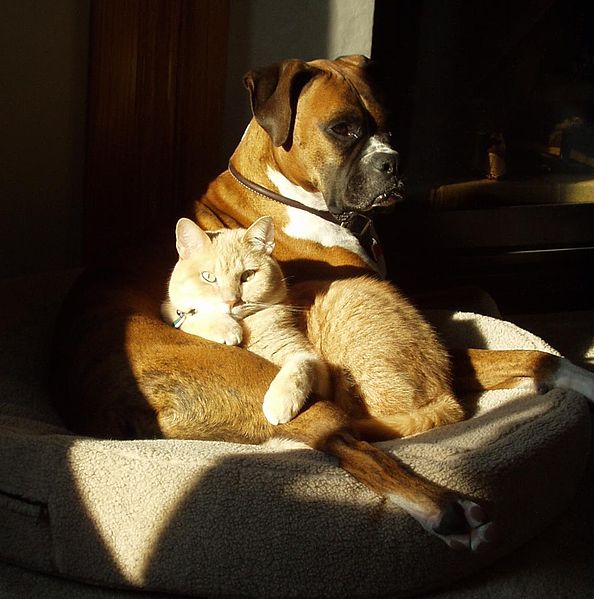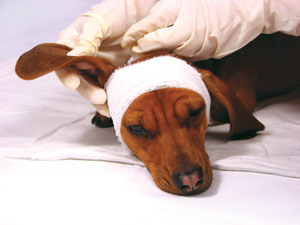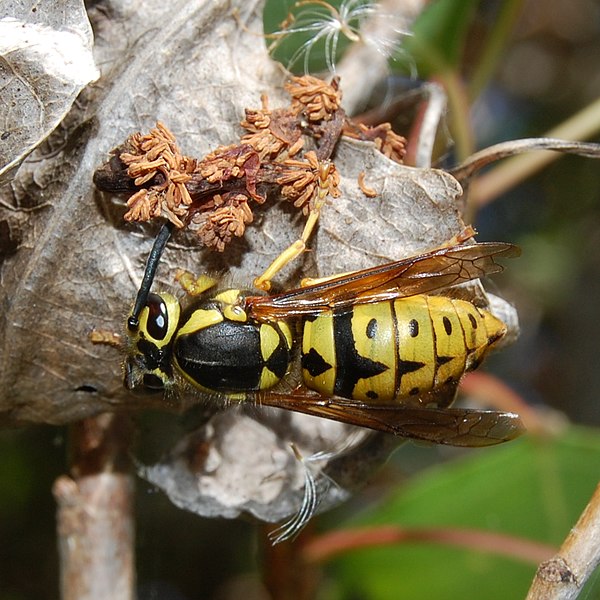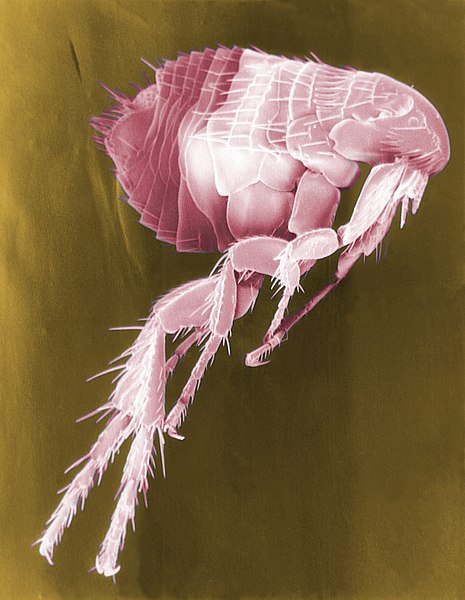 Dogs love to run, play and explore. Their rambunctious ramblings and curiousity may well be some of your favorite attributes about your pet. Personally, I love to watch my dogs off-leash in the countryside where they can run free, roll around and really live life to it’s fullest, even if it’s only for a few hours each week. While we love to let them roam and investigate new places and things, there is always the possibilty that they may run into something unfamiliar or even dangerous in the wild frontier. A single encounter with today’s creature of topic can result in a face full of painful pricks. not to mention anguish (yours and your dogs) and the potential for a hefty vet bill. Let’s talk a little about the prickly porcupine. Read More »
Dogs love to run, play and explore. Their rambunctious ramblings and curiousity may well be some of your favorite attributes about your pet. Personally, I love to watch my dogs off-leash in the countryside where they can run free, roll around and really live life to it’s fullest, even if it’s only for a few hours each week. While we love to let them roam and investigate new places and things, there is always the possibilty that they may run into something unfamiliar or even dangerous in the wild frontier. A single encounter with today’s creature of topic can result in a face full of painful pricks. not to mention anguish (yours and your dogs) and the potential for a hefty vet bill. Let’s talk a little about the prickly porcupine. Read More »
Category Archives: Pet Problems
Feed SubscriptionCanine Influenza: What You Need to Know
Have you heard of Canine Influenza? Like the flu that can cause us misery any time of year, this virus is a highly contagious, airborne illness that can affect the respiratory system of your dog if he is exposed. Recently, a number of cases have been reported and confirmed in Lancaster County, triggering the temporary closure of several local kennels and boarding facilities. This virus is easily spread with a cough or a sneeze from an affected pet, and it can be transferred or contaminate any surface, potentially infecting any other dog that walks through the area. While the virus can make your pet quite ill, the bright side is that it is rarely fatal. Here are some other quick facts about Canine Influenza you should know. Read More »
Pet Compatibility – Helping to Ensure Successful Cohabitation Between Pets and People
 Bringing a new pet into the family or combining households each coming with their own pets can pose some interesting problems. It’s important to consider the logistics of forming relationships between pets and between people and pets before rushing them into a situation that may be strenuous for all involved. There are some easy ways to minimize or even eliminate problems during these transitions if you are willing to take take the steps necessary.
Bringing a new pet into the family or combining households each coming with their own pets can pose some interesting problems. It’s important to consider the logistics of forming relationships between pets and between people and pets before rushing them into a situation that may be strenuous for all involved. There are some easy ways to minimize or even eliminate problems during these transitions if you are willing to take take the steps necessary.
Adopting a New Friend
Whether you may be looking into adopting your first pet or bringing a new one into the family, it’s important to meet lots of candidates before deciding on the one who will fit best in your family. While you may be attracted to a specific breed or look, it is ultimately a pet’s personality that will make integration a success.
 If you already have a dog or cat or have previous experience in living with one (or more), you probably already have an idea what you’re looking for in your next companion. You probably already know what works for you as far as pet behavior and personality and what animals may be the best fit for your situation. First time pet people may have more difficulty in making the right choice and getting past the first impression they may have from a photo or first glance. Pet seekers may think that they know what they want, but may fail to understand the tendancies and potential issues that may come along with specific types of pets, and it may be hard to muster patience and understanding to get through if you’re a first-timer. As a result return rates to shelters can be as high as 20 percent, failed connections and sad endings that may have been avoided with a little more time or planning.
If you already have a dog or cat or have previous experience in living with one (or more), you probably already have an idea what you’re looking for in your next companion. You probably already know what works for you as far as pet behavior and personality and what animals may be the best fit for your situation. First time pet people may have more difficulty in making the right choice and getting past the first impression they may have from a photo or first glance. Pet seekers may think that they know what they want, but may fail to understand the tendancies and potential issues that may come along with specific types of pets, and it may be hard to muster patience and understanding to get through if you’re a first-timer. As a result return rates to shelters can be as high as 20 percent, failed connections and sad endings that may have been avoided with a little more time or planning.
The ASPCA has developed a simple and effective method for helping those ready for their next friend to find a good fit. Their Meet Your Match program begins with a personality assessment of each pet they bring in to determine each individual’s dominant traits and characteristics including friendliness, playfulness, energy level, ect. The animals are then categorized into one of nine color-coded personality types including laid-back “Couch Potatoes,” or “Go-Getter” types. The personalities are not assigned on preconceived breed notions, but on the individual. These classifications help you as a potential adopter, to meet cats or dogs with personalities who might suit you best. While you are not restricted to choose pets in your category, representatives encourage you to meet and interact with these pets first in hopes of creating a forever situation.
Be sure to consider how any current pets may feel or adapt to a new pet in the house as well.
Pulling Pets Together
 Perhaps you are adopting a second pet or maybe you’ve reached a point in your life where you will be combining households, whether through a new marriage, relationship or some other situation. Now both sides have to consider how your pet(s) will adjust to new surroundings or new entities that haven’t been in a shared space before. Some pets venture through these transitions with ease, while others can become stressed or exhibit undesireable “acting-out” behaviors you may not expect or appreciate. Take steps to ensure a smooth move and adjustment, but stay prepared for issues that may arise that could require extra attention, patience, time from the humans in the house.
Perhaps you are adopting a second pet or maybe you’ve reached a point in your life where you will be combining households, whether through a new marriage, relationship or some other situation. Now both sides have to consider how your pet(s) will adjust to new surroundings or new entities that haven’t been in a shared space before. Some pets venture through these transitions with ease, while others can become stressed or exhibit undesireable “acting-out” behaviors you may not expect or appreciate. Take steps to ensure a smooth move and adjustment, but stay prepared for issues that may arise that could require extra attention, patience, time from the humans in the house.
One of the most important first steps is to let potential housemates meet and interact in a neutral location. This helps to seed relationships without as many complications with territoriality and/or possessiveness. Dogs may be a little easier to socialize than other pets. Take the pups and the whole family to the dog park or a similar locale to meet and play, and do it several times so everybody gets to know each other. If you’re adopting, ask the shelter if you can bring your current pet(s) to meet the potential adoptee–many shelters will ask that you do othis anyway, and they often have dog runs or contained areas where the animals can interact before you bring the new pet home. Keep open communication about your pets, making sure (specifically with children) that you all know what pets like and don’t like. If your dog doesn’t like his ears touched, for example, be sure the new crew knows it to prevent any misunderstanding.
Once things seem kosher on neutral ground, give the new home a visit. It may help to remove familiar items like toys, bowls and treats from the area which may bring out some territoriality in established animals. Be watchful during these initial visits to deal with any problem behaviors. Dogs are pretty good at communicating and setting up a natural order. After a few visits the pecking order should be established and the permanent move should be pretty smooth. Be consistant in training and attention to all pets involved so the natural order isn’t upset by jealousy or competition.
Cats and other pets may not be quite as easy. Try slow introductions and be sure to give them some space to avoid each other if they want to. Remember, even if you take all the precursory steps, matches aren’t always ensured and sometimes a relationsip may never form between pets (or pets and people for that matter). Just be prepared to accommodate if they choose not to like each other, possibly even dedicating seperate spaces where they can avoid each other.
Cats Grooming image referenced from wikipedia and originally posted by Jessica Deily
Doggie Kiss image referenced from wikipedia and originally posted by Mike Baird
Home Remedies for Minor Pet Ailments
 You’ve all heard the old addage that an apple a day keeps the doctor away. Maybe you eat garlic to kill a cold, or gargle salt water to heal a sore throat. We’ve all tried home remedies to cure a minor ailment. I think I may have tried them all! There are also home remedies available for us to help our pets. Here are some simple home remedies you can use to help your pet cope with minor ailments like for skin irritations, coat issues, and digestive upset in the comfort of your own home.
You’ve all heard the old addage that an apple a day keeps the doctor away. Maybe you eat garlic to kill a cold, or gargle salt water to heal a sore throat. We’ve all tried home remedies to cure a minor ailment. I think I may have tried them all! There are also home remedies available for us to help our pets. Here are some simple home remedies you can use to help your pet cope with minor ailments like for skin irritations, coat issues, and digestive upset in the comfort of your own home.
Caution: Use your best judgment, if your pet is bleeding, having difficulty walking, is lethargic, or has been vomiting/experiencing diarrhea for a prolonged period of time get your pet to the vet right away! These remedies are only intended for minor irritations. Read More »
Recognizing and Treating Bee Stings on Pets
 Insect stings are probably not the first hazard you consider when you and your pet are enjoying the outdoors. While most stings are not life threatening, there are several factors that can mean the difference between an itchy lump and a trip to the emergency vet. Stings can occur anytime, though they are obviously more common during warmer months when insects are more active. It’s important to know how to recognize reactions and symptoms of stings so you know how to treat them and when to seek veterinary attention.
Insect stings are probably not the first hazard you consider when you and your pet are enjoying the outdoors. While most stings are not life threatening, there are several factors that can mean the difference between an itchy lump and a trip to the emergency vet. Stings can occur anytime, though they are obviously more common during warmer months when insects are more active. It’s important to know how to recognize reactions and symptoms of stings so you know how to treat them and when to seek veterinary attention.
A Story
When I was a teenager, fall was the time for firewood collection in the wooded lot behind my family’s home. It seemed simple enough, we used a tractor and cart, collecting wood from fallen trees as my father sliced them into fireplace-sized logs to warm us through winter. Collection trips were family affairs: me, my parents, siblings and several of the family dogs who would romp through the underbrush and creek beds in search of wayward squirrels, muskrats and other wildlife to chase. The chill in the air that brought an end to humid summer days lulled the woods into a quiet dormancy, but not everything had quieted for the winter on one particular evening — and an unfortunate disturbance spurred a night to remember. Read More »
Warm Weather Worries – Common Pet Parasites and Pests
 Parasites can afflict pets any time of the year, however during the spring and summer months, they tend to be more prevalent. Our pets spend a lot more time outside when the weather is warm, and parasites breed more readily. Even if your pets spend all or most of their time indoors, it is possible for parasites to find them whether carried in on our clothes or by crawling through our screen doors. Here are some common parasites to look out for and ways to combat them this summer. Read More »
Parasites can afflict pets any time of the year, however during the spring and summer months, they tend to be more prevalent. Our pets spend a lot more time outside when the weather is warm, and parasites breed more readily. Even if your pets spend all or most of their time indoors, it is possible for parasites to find them whether carried in on our clothes or by crawling through our screen doors. Here are some common parasites to look out for and ways to combat them this summer. Read More »
Dealing with Pet Hair & Shedding
 Don’t you wish that you could stop your pets from shedding all over the house? Shedding is a natural occurrence in all dogs and cats, except hairless breeds. Some shed their coats more often than others; some breeds shed seasonally and others rain fur all over your house all year. I currently have three dogs, two of which seem to shed enough for at least a dozen dogs! While, it isn’t possible to stop shedding altogether, there are some preventative measures you can take to keep the hair in your house to a minimum.
Don’t you wish that you could stop your pets from shedding all over the house? Shedding is a natural occurrence in all dogs and cats, except hairless breeds. Some shed their coats more often than others; some breeds shed seasonally and others rain fur all over your house all year. I currently have three dogs, two of which seem to shed enough for at least a dozen dogs! While, it isn’t possible to stop shedding altogether, there are some preventative measures you can take to keep the hair in your house to a minimum.
Pit Bull – A Notorious Name and a Ruined Reputation
 For many people the term “pit bull” typically brings several negative images immediately to mind. Images of a muscular dog on the end of a thick chain guarding a junkyard; a news report of a child being killed by a pack of ferocious dogs; the underbelly of the inner city where dog fighting rings play their disgusting games. “Pit Bulls” have earned a stigma as brutes, fighters, and even killers. I have to admit that if I were to come across the stereotypical “pit bull” in a dark alley, I would certainly be looking for the quickest way out of there. But, in my entire career in animal care, I have never come across a true pit bull, at least not the dog that fits that notorious label. Read More »
For many people the term “pit bull” typically brings several negative images immediately to mind. Images of a muscular dog on the end of a thick chain guarding a junkyard; a news report of a child being killed by a pack of ferocious dogs; the underbelly of the inner city where dog fighting rings play their disgusting games. “Pit Bulls” have earned a stigma as brutes, fighters, and even killers. I have to admit that if I were to come across the stereotypical “pit bull” in a dark alley, I would certainly be looking for the quickest way out of there. But, in my entire career in animal care, I have never come across a true pit bull, at least not the dog that fits that notorious label. Read More »
Pet Wolves and Wolf Crosses – Social Dilemmas
 Wolves inspire many emotions in people. Some see them as supernaturally evil forces or destructive predators, others see them as an ultimate symbol of freedom and nature. They are majestic, complex creatures with a long history and a permanent place folklore.
Wolves inspire many emotions in people. Some see them as supernaturally evil forces or destructive predators, others see them as an ultimate symbol of freedom and nature. They are majestic, complex creatures with a long history and a permanent place folklore.
Thousands of years ago, man started to form relationships with these animals. Their ancestors gave rise to the many breeds of dogs we know and love today. Today, some people choose to bring wolves into their homes and into close contact with human society, crossing them with domestic dogs to create hybrids or even keeping purebred wolves as pets. Though the thought may be appealing to some, bringing an animal with wild bloodlines home to the family may not be the best idea. Read More »
Pet First Aid – Handling Common Emergencies
In my last blog, I gave you a list of items you should have in your pet’s first aid kit. This time I would like to go over how to handle some of the more common health emergencies associated with dogs and cats. As always, please call a veterinarian for serious or life threatening situations. When in doubt, they are your best bet for providing proper care to a sick or injured pet. Always remember that animals in pain may bite out of fear, so approach injured and sick pets with caution and NEVER touch wild or unfamiliar animals without assistance from qualified wildlife handlers. Read More »
 That Pet Blog That Pet Place Pet Blog
That Pet Blog That Pet Place Pet Blog
